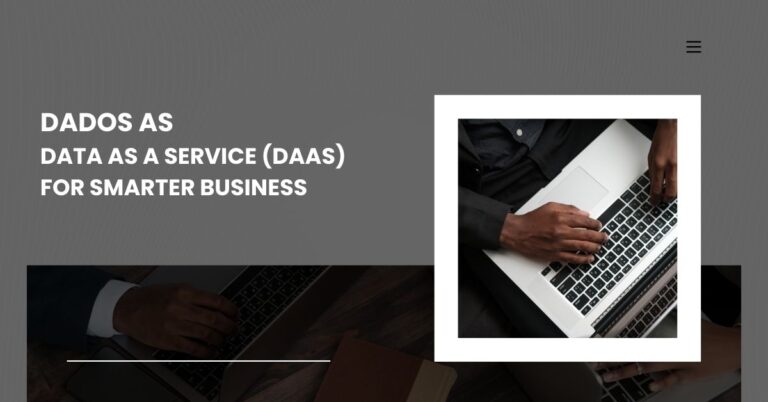Bridging Strategy and Execution in Mergers and Acquisitions

Mergers and acquisitions promise growth, new markets, and additional capabilities. But for many businesses, real work begins after the deal is signed. When two businesses merge, they usually have to contend with different systems, ways of doing things, and ways of life. When teams aren’t on the same page, they undertake the same work again and over, approvals take longer, and key information is lost, which slows down the merger’s value realization.
You need the best project management tools during this change. They provide a single area where strategy and execution meet. This helps leaders make integration evident and offers people the structure they need to do their jobs with confidence. Lark highlights how connected digital technologies may assist businesses move from arranging a merger to carrying it out smoothly.
Lark Base: Building shared structures for integration
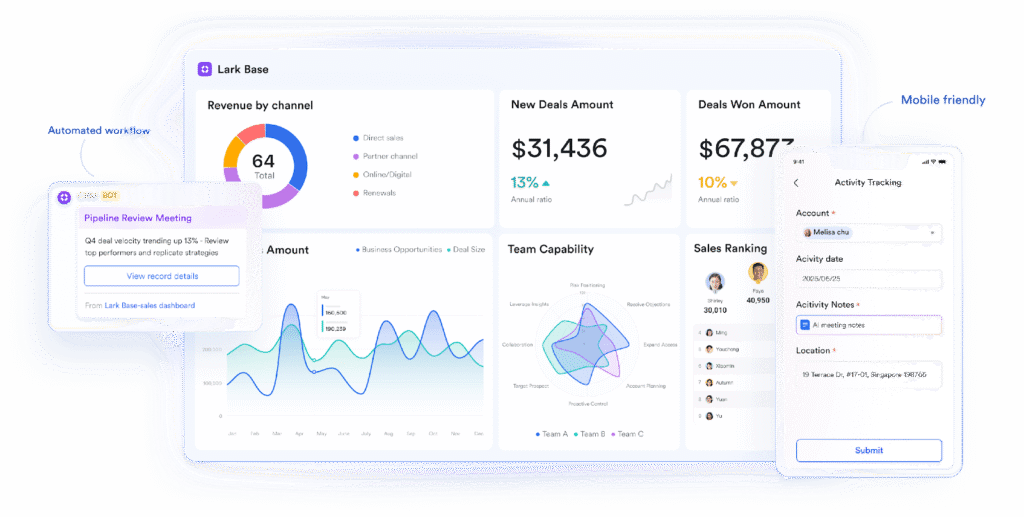
The first thing to do in an M&A is to make sure that records and workflows are working together. When one company uses spreadsheets and the other uses antiquated technology, it can be challenging to work together. Lark Base fixes this by putting all the data into structures that can be changed and shared.
Base organizes the customer data by letting sales teams combine pipelines, combine information, and keep track of prospects in real time, much like a CRM app acts for such data. Operations can see all of the supply chains at once, and HR can put all of the employee information into a safe, adaptable center.
- Custom databases allow each department to design structures that fit new integration needs.
- Dashboards show leaders how well the two companies are doing after the merger.
- Linked records put contracts, compliance needs, and operational data all in one location.
- Multiple views (kanban, Gantt, or grid) let each team work in the format they know best, reducing disruption.
- Filters and searches make it easier to find the right records quickly during consolidation.
Base gives everyone a consistent source of truth so that integration doesn’t take longer because of problems with the systems.
Lark Messenger: Creating one communication rhythm
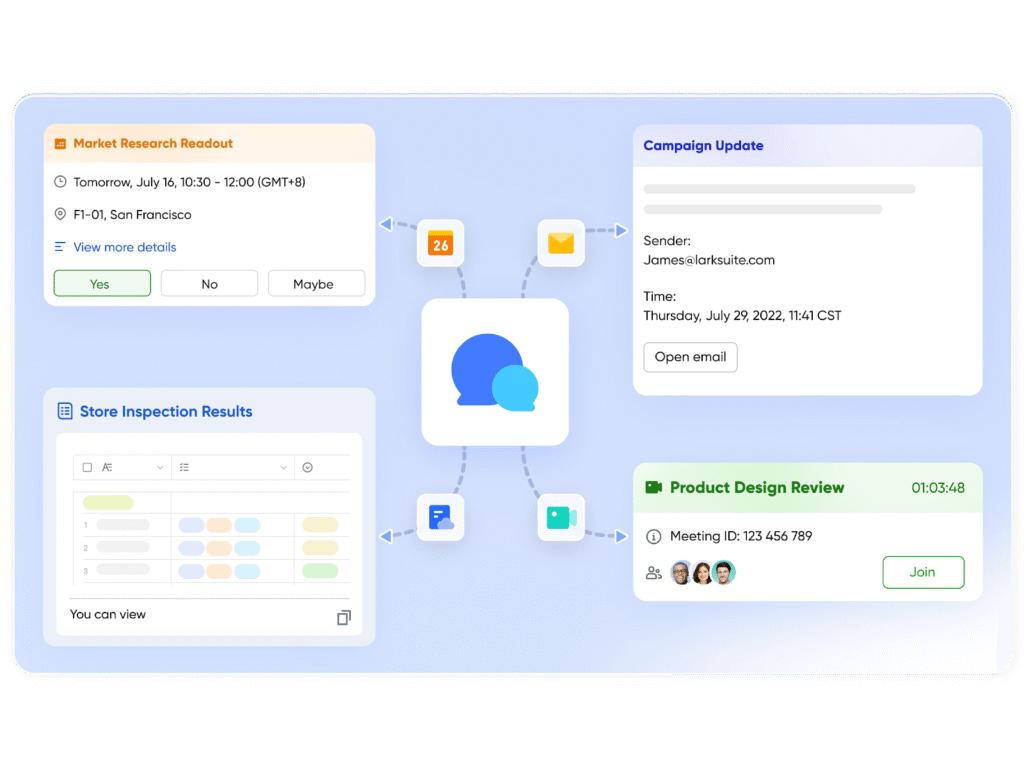
Mergers usually don’t work out because workers feel disconnected or bewildered by the varied ways of communicating. One company might use a lot of email chains, while the other might use chat apps that don’t operate well with each other. Lark Messenger fixes this by making one beat for all messages.
- Threaded chats keep discussions regarding integration tied to specific workstreams.
- Pinned messages draw attention to important changes, such as new policies or steps for cultural onboarding.
- Alerts and mentions quickly get the right individuals into conversations.
- Chat-to-task conversion makes sure that changes to integration lead to activities that can be tracked.
- Built-in translation assists with M&A deals around the world when language might be a hindrance.
Messenger makes it easy for people to talk to each other, which eliminates uncertainty and helps build a shared culture.
Lark Calendar: Aligning milestones across organizations
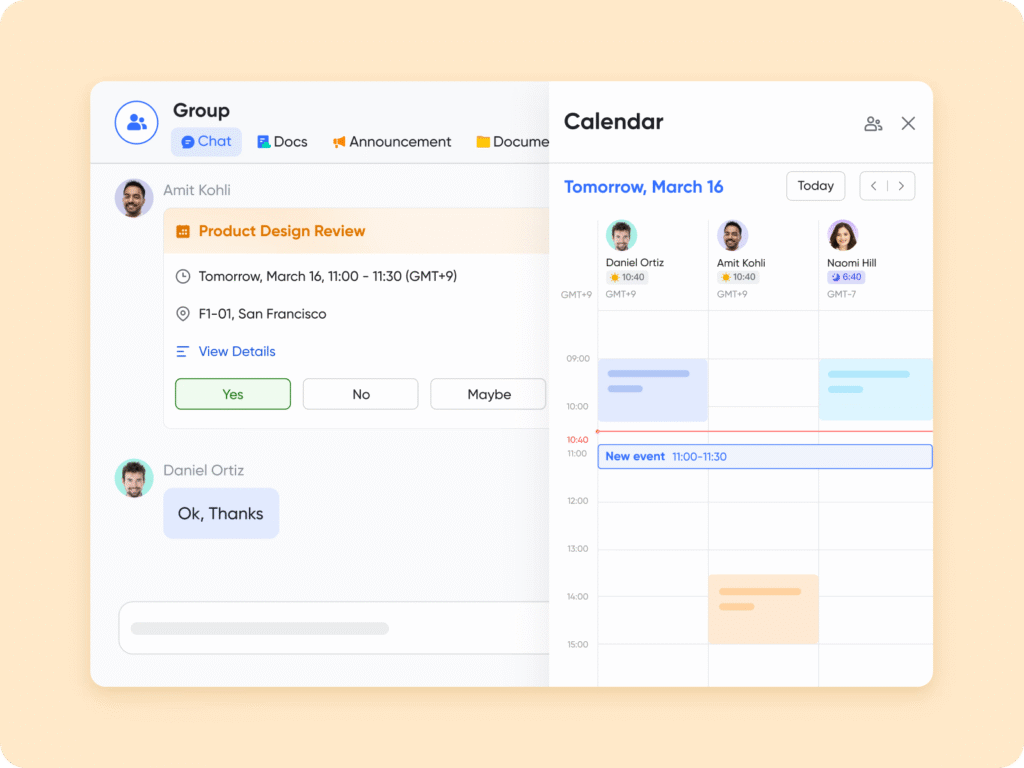
There are thousands of overlapping milestones in M&A integrations, like employing new workers, filing papers with the government, relocating IT systems, and talking to clients. If schedules don’t line up, even the best plans could go awry. Lark Calendar makes things clearer by aligning milestones between the two businesses.
- Shared calendars display key integration deadlines across departments.
- Automatic time zone conversion makes sure that everyone in the team is on the same page.
- Linked events connect meetings to Base records or Docs to give them meaning.
- Reminders keep employees on track during high-pressure timelines.
- Visibility controls help leaders achieve the proper balance between being open and keeping things private.
Calendar helps the merger move forward by making scheduling more disciplined, which keeps deadlines from being missed.
Lark Approval: Moving integration decisions forward
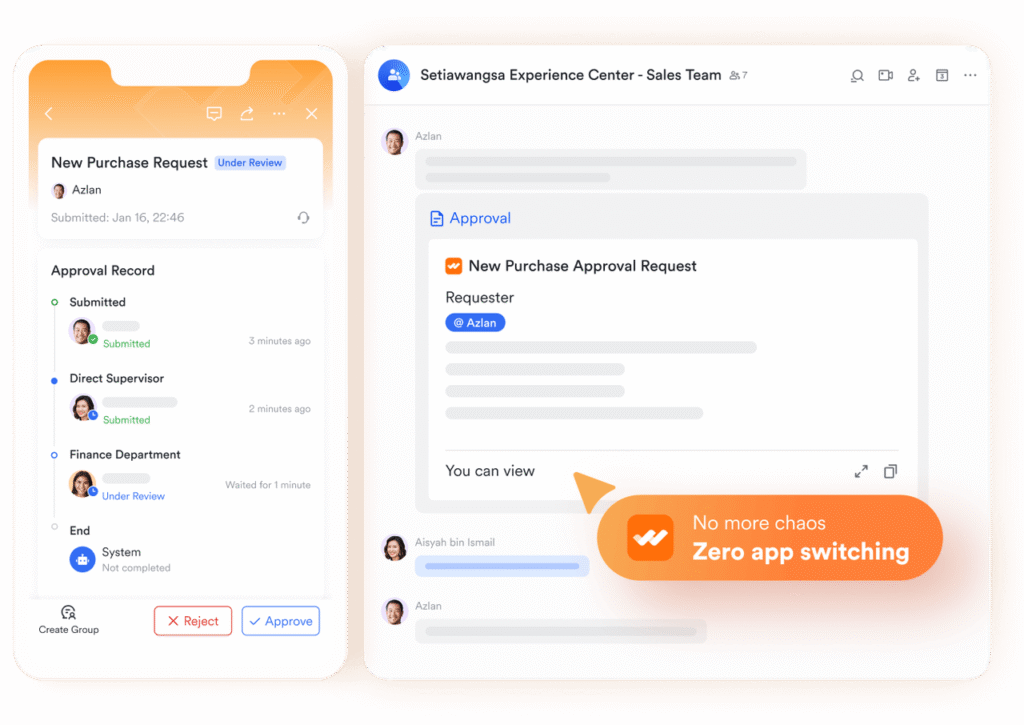
There are a lot of things that need to be done quickly during M&A, like shifting money, renewing contracts, and changing rules. When approvals languish in inboxes, things take longer and risks go higher. Lark Approval is a straightforward and orderly approach to keep things going.
- Standardized forms make it such that both groups have the same requests.
- Transparent flow lets executives know what has to be done.
- Role-based permissions protect sensitive HR and financial information.
- Logs retain a comprehensive record of all selections to make sure they are followed.
- The automated workflow distributes requests right away to the right personnel, so there are no delays.
Approval makes sure that M&A choices are made quickly, but also in a way that is safe and stable.
Lark Docs: Creating shared playbooks for execution
Integrations need things like playbooks, revised policies, and new strategies, but it’s tougher to get everyone on the same page when files are scattered out. Lark Docs lets both groups work together to develop content in real time.
- Real-time co-editing allows teams from both sides to build integration playbooks together.
- Inline comments make it simple to see what others think.
- Version history makes sure that people are responsible when large changes happen.
- Embedded content (Sheets or Base records) keeps supporting data close.
- Access controls protect private papers while still letting people see them.
Docs gives both organizations a shared documentation hub so that everyone can see the same, up-to-date information.
Lark Wiki: Preserving institutional knowledge
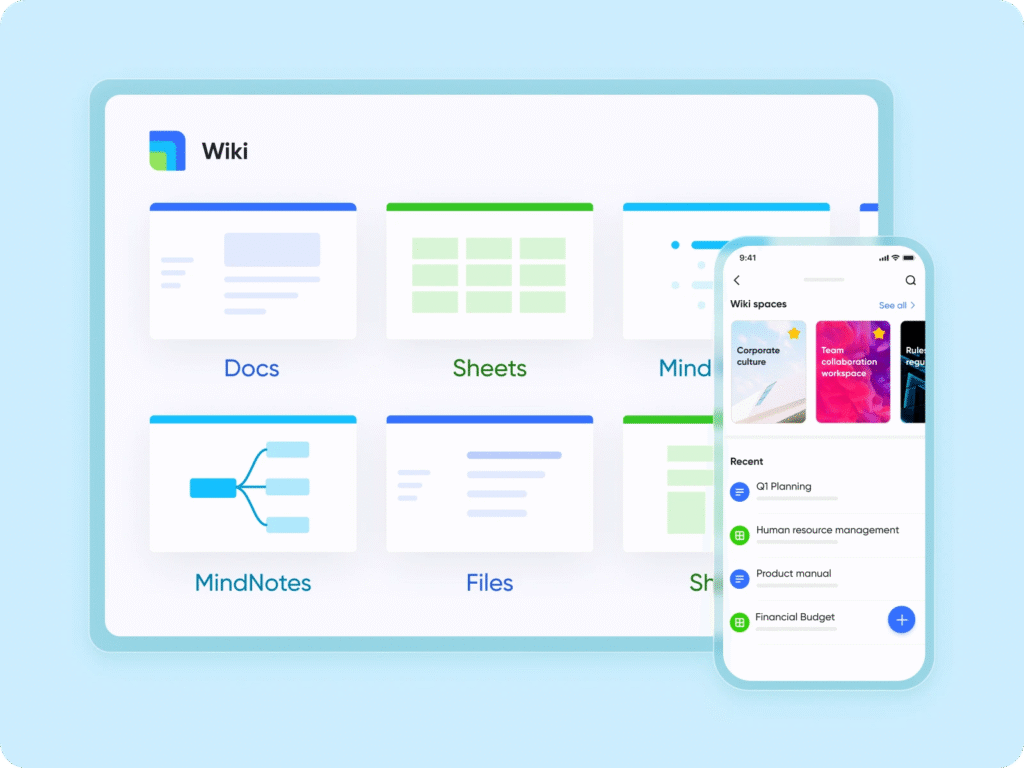
One of the biggest dangers in M&A is losing knowledge. People may leave, rules may change, and the organization’s memories may be gone in a moment. Lark Wiki stops this from happening by keeping and exchanging information between the two companies that have just merged.
- Centralized information sources store policies, common questions, and best practices.
- Instant updates work for both groups, so everything stays the same.
- Permissions protect private data while still letting individuals who need it see it.
- Searchability makes finding the right content easy for new employees.
- Continuity makes sure that crucial information stays the same even when things change.
The new company may use the greatest aspects of both companies without losing any essential information thanks to Wiki.
Conclusion
Mergers and acquisitions need not only a sound strategic vision, but they also need to be done well. Not having tools that work together makes it harder to put things together, share records, and make decisions more slowly. Unified platforms like Lark bridge this gap by giving businesses the digital tools they need to operate together.
Base structures enable you share records and have features like a CRM. Messenger sets the pace for communication, Calendar maintains track of integration milestones, Approval speeds up decisions with automated workflow, Docs gives you a shared playbook, and Wiki keeps institutional knowledge. These traits work together to help companies plan and carry out an M&A without any issues.
It’s apparent what executives need to learn: the deal doesn’t show how valuable a merger is; the actual value is in how quickly and well the new company comes together. Companies that combine their systems make their huge mergers and acquisitions plans work in the long run.




